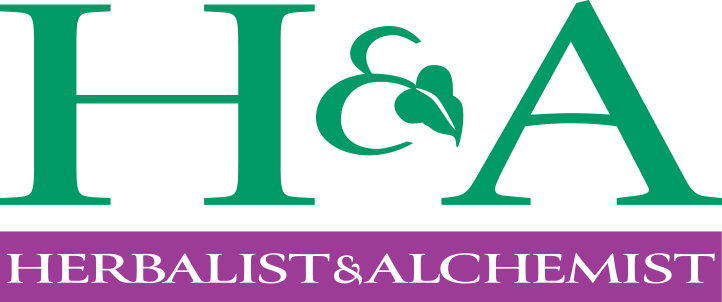Richard Mandelbaum RH is a clinical herbalist
with a private practice in Brooklyn and in Sullivan County,
NY. Richard has been practicing as an herbalist since 1997,
with a background in both Chinese and Western herbal
traditions, and at one point worked at H&A making herbal
products. In addition to seeing clients, he teaches classes
in herbal medicine, medicine making, and botany. He is
currently on the faculty at David Winston’s Center for
Herbal Studies in Washington, NJ. He has been a professional
member of the American Herbalists Guild (AHG) since 2003,
and joined the AHG Council in October 2012. You can learn
more about Richard on his website, by reading
his blog Reality Sandwich, or
contact him directly at richard@arborvitaeny.com.
What is your earliest memory of realizing herbs were more than just foliage around you?
Something awoke in me when I was around 14 years old. I
became curious—about birds, about stars, about trees. Growing up in
suburban New Jersey, despite being in a fairly rural area near farms
and woods, I realized I was ignorant about the world around me. I had
not been raised with any of that knowledge passed down to me, and I
wanted to know my world better. Looking back on it, I can say there was
some realization and expression of my disassociation with the natural
world—the real world. At the same time, I began immersing myself in
philosophy of all kinds, from all parts of the world, with Buddhist
writings along with the Hindu Bhagavad Gita being the ones that
influenced me the most, and continue to influence me.
So, long story short, I went a bit geeky teenager
field-guide crazy, studying on my own how to identify birds, stars, and
plants, beginning with trees and then expanding from there. The plants
“stuck” more than the others did apparently! In some alternate
universe, I am an astronomer or ornithologist.
How did your herbal education begin, and expand?
From there I spent several years studying plants,
teaching myself field botany skills, gradually beginning to forage
wild foods, and eventually gardening and cultivating. I found myself
in the mid 90’s (in my mid-twenties) in rural Arkansas, working in
the organic gardens of an environmental education center. The local
community there used herbs extensively, and a co-worker, local to
the area, was an herbalist and midwife. That opened my eyes, and
then when a group of us traveled to the Frontier Herb Fest that
summer, my eyes were pried fully open. I realized how deep and vast
herbalism could go, and I was hooked immediately. One of the
teachers who most impressed me was David Winston, and when I learned
he had a program in New Jersey, I suddenly knew what I was going to
do next. So when my time was up in the Ozarks, I headed back East,
enrolled in David’s program, and began working on an organic
permaculture farm in northwestern NJ. I went on to grow and
wildcraft medicinal plants on my own for Herbalist &Alchemist, and
also to work in the H&A lab making medicines. I highly recommend to
anyone studying herbs or enrolled in a program to try to find work
or activities that complement that program. For instance, I have
students working in herb shops or making products.
After David’s program, I enrolled in the Advanced
program at Rosemary Gladstar’s Sage Mountain, and subsequently had
the incredibly good fortune to be able to study with William
LeSassier shortly before his death.
I’m now very
honored to be teaching for David as well as at my own herb
school.
Of course, learning is an endless path,
not a destination, and we always have an infinity left to
learn. That can be daunting for some but I find an odd comfort in it
and cannot picture it any other way. Learning is so dynamic and
creative, whereas “knowing” something seems a bit dead, or at least
boring, doesn’t it?
As an herbal educator, have you seen changes in the backgrounds of people who come to you to learn about herbs?
Yes there have been changes. Of course, it is
difficult to know what are general trends, and what are changes in
just my own narrow experience, but I see larger numbers of young
people in their twenties and early to mid-thirties deciding to study
herbal medicine in an in-depth way such as enrolling in a school or
program. When I studied with David, I was one of only three or four
in that age bracket. At my school in New York now for instance, that
is the predominant demographic, with a healthy mix of folks who are
older, and a small number even younger.
One thing we are also seeing is more and more people
of color coming to the forefront and making their voices heard. This
is incredibly important. As a white man, I try to point out to
people studying herbs or in the herbal community that white men
probably use herbs less than any other demographic. But yet we see
some of the same racial (and other) power dynamics in the herbal
community that we see outside the herbal community. People of color,
immigrant, African American communities, and of course, LGBTQ
communities too, have always used herbal medicine since time’s fuzzy
beginnings, and yet often due to societal pressures and injustices
might have more challenges in formally studying. So I think it’s
important as educators to acknowledge that we have an indispensable
role to play in this process and to address inequities in our own
community in terms of teachers, students, curriculums, etc.
